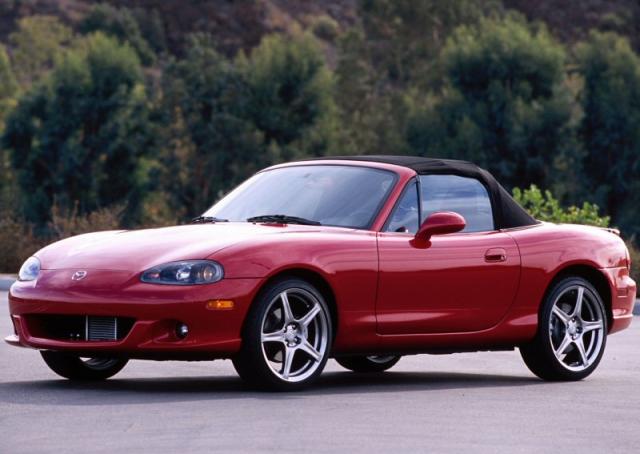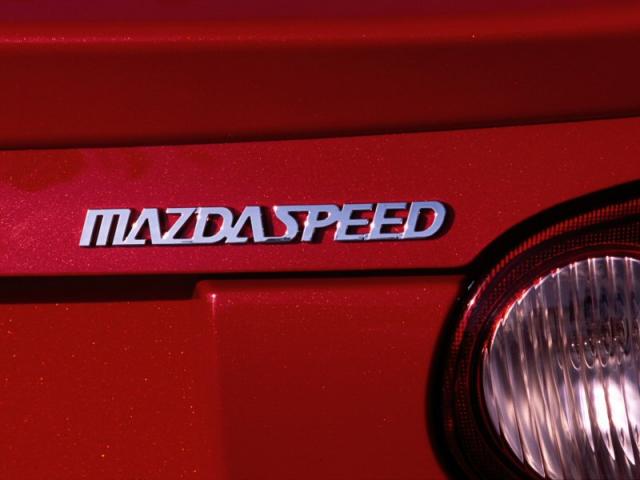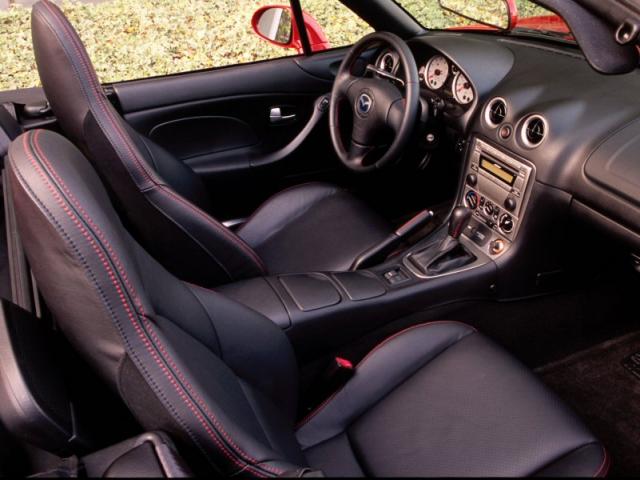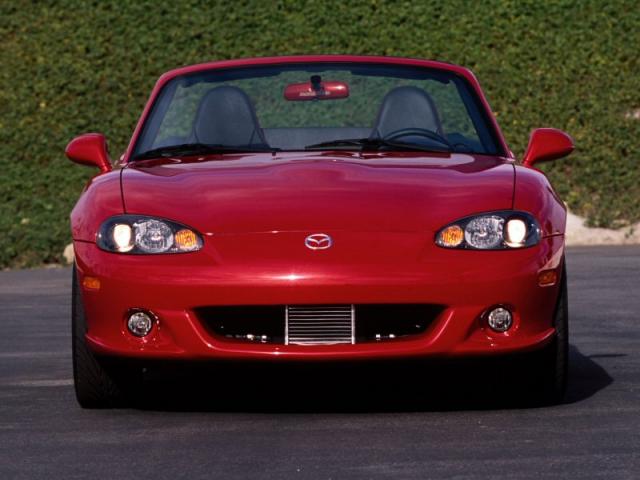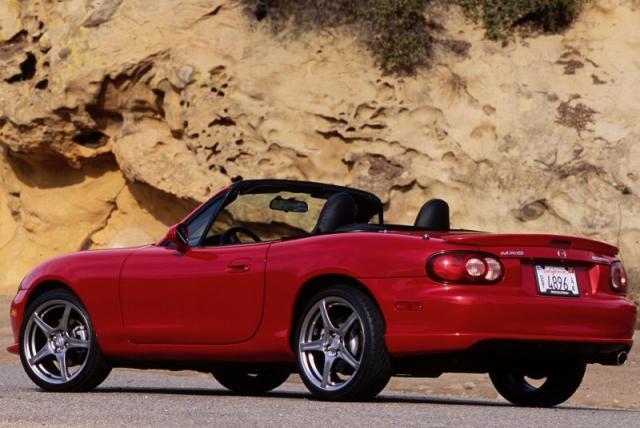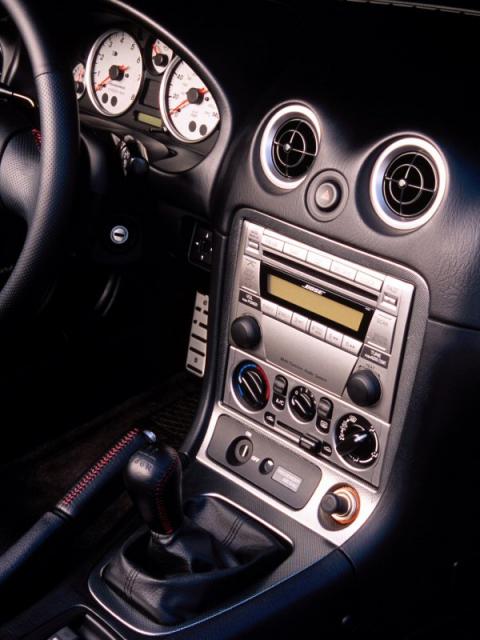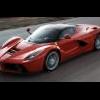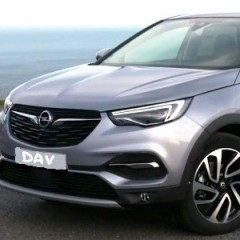Search the Community
Showing results for tags '2004'.
-
Source: Saleen In another move signaling the diversity and expansion of Saleen, Inc., the company announced production of the high-performance Focus model for 2004, N2O Focus. According to Steve Saleen,
-
Dear All, saw on the ad, both cars got my attention. I am thinking of getting a short term cars to tight over my sales business. Just started my business with my partner. So, we do not wish to fork out too much on car, but car is essential for me. Not considering van for now. Auto short term drive would be ideal, anything that is over 1.5 years would be good as once business stablized or doing better, will opt to upgrade and change to better or newer car. ** i am trading in my proton savvy 5month left car, with2.7 Scarp value plus abit on body. and i do not intend to throw in alot of down payment. max is use my trade in value to offset a little bit. Nissan March, 1.4C Auto. 2004. COE expired 2019 oct? selling 15800, Nissan Sunny, 1.6 Auto, 2006, COE expired May 2021, about 21800-22800 Which one is more ideal? heard sunny is very high FC? how about march? good for short term drive? and if mid way i wana sell off this car, to upgrade, what are the implication and things that i will foresee?
- 34 replies
-
- nissan
- nissan sunny
-
(and 6 more)
Tagged with:
-
Hi all, I am driving a 2004 Mazda 3, with ard 130K mileage. Recently, the engine warning light was activated. Sent it to cityauto @ sin ming and they informed that the O2 sensor is faulty. replacement cost is $500+ (or $400+, cant remember). They also said that the consumption could be affected if it is not changed. been driving for ard 3 weeks and consumption is affected just a little. Can bros who had faced this issue advise if this price is reasonable, or are there workshops with better prices? (seems a bit exp. for a change of sensor!) Also, is it ok for me to ignore the problem and continue driving with the light on? Have googled for answers but pple seem to be on both sides of the fence on this issue. Thanks in advance!
-
Hi people, Wonder anyone has lobang to the above manual? Just bought a second hand model with no manual... Needed to find out things like this car's min RON figures and all... Hear from you all soon... Many thanks...
-
Hi all I am looking to buy 2004-2005 Civic 1.6A or 1.7A preference: 1owner mod or stock oso can mileage low preferred. Willing to pay slightly higher than dealer price. Can deal immediately if car is deemed suitable. Please contact me via pm or @ my hp 91871010. Thanks
-
Source: Mazda Car enthusiasts in North America received a special gift for the holidays as the MAZDASPEED MX-5 Miata made its official debut at the Los Angeles International Auto Show in January of 2004. Shown briefly at the industry-only 2003 Specialty Equipment Market Association (SEMA) Show in November, the vehicle was seen for the first time by the general public in Los Angeles. "MAZDASPEED is the name given to the best of the best Mazda vehicles and we
-
Sat, Feb 20, 2010 Reuters DETROIT/LOS ANGELES - The largest US auto insurer alerted regulators earlier than first believed about a worrying trend of accidents involving Toyota Motor Corp vehicles, while the Obama administration's top transportation official said on Friday he would not relax pressure on the carmaker. Both developments came as Toyota's president, Akio Toyoda, readied to fly to Washington in an extraordinary appearance to answer questions from lawmakers next Wednesday about the safety crisis that has engulfed the company founded by his grandfather. State Farm, whose records have been sought by two congressional committees investigating recalls and complaints related to unintended acceleration in Toyota cars and trucks, revised its report on Friday of when it notified the government about certain Toyota claims activity. The insurer said earlier this month it had contacted the National Highway Traffic Safety Administration in late 2007. However, prompted by the public interest in Toyota, the insurer reviewed its records again and has now found that it contacted safety regulators initially in 2004, State Farm spokesman Phil Supple said in an emailed statement. The information has been sought by House of Representatives committees probing questions around recent recalls of millions of Toyota vehicles related to loose floor mats that can jam accelerators and gas pedals that do not spring back as designed. The government believes five crash deaths are linked to unintended acceleration and are investigating consumer complaints alleging up to 29 other fatalities since 2000 could be linked as well. Regulators have not linked any deaths to the "sticky pedal" problem. The first of three congressional hearings takes place on Tuesday but much of the focus for the moment has settled on the second hearing, the next day, when company president Toyoda is scheduled to testify. Toyoda said he intends to provide a "sincere explanation" to the House Oversight and Government Reform Committee of problems that led to the string of recalls since late last year. Toyoda's decision on Thursday to accept a congressional request to testify ended days of uncertainty over how the company would ultimately respond to calls that he come to the United States to address safety questions. The media-shy Toyoda, who took the top job last June, originally said he had no intention of appearing before Congress himself, drawing criticism from industry analysts and Japanese politicians. Even if Toyoda's appearance before the Oversight panel goes well, the carmaker still has problems to overcome from engineering challenges to lawsuits to restoring brand image. Toyota's stock has fallen 22 percent since January 21, erasing more than $30 billion in market value. US Transportation Secretary Ray LaHood said on Friday that he is "very pleased" he will be able to meet Toyoda next week, and that the government has no intention of turning down the heat on the automaker. "We at DOT (the Department of Transportation) and we at our safety agency (the National Highway Transportation Safety Administration) will continue to work 24/7 and we will not sleep until every Toyota is safe for every American who owns one," LaHood told a news conference in Los Angeles. Congress is examining several issues in a string of Toyota recalls that date to September. A priority of lawmakers is how Toyota and NHTSA handled complaints and other matters related to unintended acceleration, whether the recalls were done swiftly enough, and whether they were sufficient. The Oversight committee will also hear from LaHood and a witness representing the family of Mark Saylor, a California highway patrol officer killed along with his wife, daughter and brother-in-law in an August crash that triggered renewed government scrutiny of unintended acceleration. Toyoda has said the company is investigating the causes of the unintended acceleration and braking that have led to a recall of about 8.5 million cars worldwide. INTENSE PREPARATION Analysts and public relations experts stressed the need for clear and honest testimony from Toyoda. By appearing to dodge questions, Toyoda could further stain Toyota's reputation. "Rather than getting bogged down with the details, I think (Toyoda) should use this as a chance to communicate Toyota's corporate philosophy," said Yasuhiro Matsumoto, a senior analyst at Shinsei Securities in Tokyo. "What's missing from Toyota right now is the big picture." Executives giving such testimony should also expect difficult questions, experts said. "The important thing is that they actually answer all questions and don't dodge or run away," said Shoichi Yoshikawa, chief executive of public relations firm Hill & Knowlton Japan. Toyoda, 53, will have to craft and deliver a message that resonates with millions of consumers, investors, employees and lawmakers around the world. He is likely to undergo intense preparation. Toyota may hire lawyers to drill him with mock questions, one consultant said. A company source said it had not yet been decided whether Toyoda would speak in Japanese or English, but the company has already contacted some translation companies. In addition to the recalls over unintended acceleration, a separate recall is under way to fix software controlling the brakes on Toyota's iconic Prius hybrid. Regulators have also begun a preliminary investigation into complaints about steering problems in late model Corollas. Toyota's safety woes are deepening at a time when automakers worldwide are struggling to emerge from a sharp sales dip that led to the bankruptcies of General Motors and Chrysler.
- 2 replies
-
- Government
- told
-
(and 3 more)
Tagged with:
-
Every point raised has being implemented.....look at the outcome....are citizen happy or the gov is happy? If you are not happy with the increasing property prices, you can go talk to this prof. MAY 28, 2004 Expert concerned about 100% home ownership NUS don says move led to policies that distorted market; he also calls for halt to new flats so prices of homes can rise A VETERAN analyst of public housing yesterday took issue with the Government's housing policy, saying the push for 100 per cent home ownership had distorted the market and led to financial hardship for many families. To correct the situation, Professor Chua Beng Huat, who once worked in the Housing Board, called in part for a stop to the building of new flats so as to allow current excess supply to be soaked up. The move will also create a 'shortage' and thus prompt an increase in the price of existing homes. Prof Chua, now a sociologist at the National University of Singapore (NUS), also described the HDB's promise to continue building flats for sale as 'wrong headed'. This was because building more three-room flats to meet current demand would 'only intensify the financial difficulties of households' trying to sell their larger flats. His remarks came in a speech at a forum organised by the NUS Real Estate Department in honour of the late Dr Amos Koh, a former lecturer. Some in the audience of about 100 property professionals, including officers from HDB, were clearly surprised by his frank comments. The real estate market was in its current state because of distortions caused by Government policies to achieve 100 per cent home ownership, Prof Chua said. This approach was itself driven by what he said was the ruling party's 'need for legitimacy to continue its monopolisation of parliamentary, hence political power; a legitimacy that is based on a quid pro quo of improved material life for all in exchange for popular electoral support'. Prof Chua added later: 'The implication of this achievement, is that every household already has a house and the need to move to another place of residence is entirely preferential rather than necessary.' Any new demand for housing is from newlyweds and new immigrants. This combined with low marriage rates and the shrinking of average family sizes has resulted in a 'generalised depression of real estate prices, particularly in the public housing sector and the low-end private housing sector', he argued. Those hardest hit by this state of affairs in the market are the retrenched, those whose businesses have failed and retirees. The solution was a moratorium on new public housing, 'to create a shortage in order to refloat the prices of existing housing,' he said. This would transfer some of the cost of present home ownership to the younger generation and thereby enable retirees to finance their future, he added. He acknowledged that the move to create such a shortage would be unpopular with the younger generation. 'However, with their ability to pay still ahead of them, their dissatisfaction will dissipate over time and the political cost to the ruling regime may not be very high,' he said. Prof Chua was also critical of the approach taken to maintain the goal of 100 per cent home ownership through various policies. These were actively discouraging flat rentals; encouraging consumption and upgrading to bigger homes through a resale policy; creating new markets for the older and smaller flats; and maintaining real estate prices above a certain level. Arguing that the State should discard its monopoly over the provision of public housing, he said the HDB should, however, remain a competitor in the housing market. This is because by remaining a player, it would put pressure on the private sector to keep improving the conditions of the housing that it provides.
-
My friend just traded-in his Sept-2004 Sunny with super high COE of $28k. But he only managed to close the deal at 1k above his scrap value of 29k. I am just curious is it normal for Sunny to have such lousy body value. Has he been chopped carrot?
-
hello, everyone it time to sell my c200 to make way for my new ride. pm me for detail. the car is 2004 jan , milage 60k travel between orchard area to shenton way daily. confirm no accident very safe buy.
-
hello , any guys know what is the min RON petrol ? 92 or 95 for this car ?? found the suspension is hard..is this normal ??
-
1. Despite the facts that we're seeing the emergence of better spec Korean cars but when we look at the Sales figure of Hyundai in Singapore, it has been declining since year 2004. Year 2004 = 13,796 Year 2005 = 12,860 Year 2006 = 10,007 Year 2007 = 5,440 and Kia is no where to be seen on the Top 10 list. 2. This make me pondering that a simple economy theory exists where when the economy is good, people will buy more expensive stuff than cheaper items. Regards,
-
HI, i am currently looking for the above model ONLY NON-TURBO Price around 179k to 200K please let me know if anyone selling, Prefer Black colour thanks please mail me
-
Looking at these 2 secondhand cars.. IS200 - RWD - 2L - More parts available, toyota. - Old model. Abit boxy. S40 - FWD - 2.4L (road tax will be crazy...2.2k) - More expensive maintaince. - Current model. - REAL conti car. Both cars, 2004 models are going ard the 70+k range, with depreciation of about 7k. What do you guys think? Which is a better buy for me? I'm in my mid-20s, stable job with a budget of around 70k, don't want to spend too much on the car. Not looking to mod it any further too. Space is not an issue. Only have myself and parents to fetch around occasionally. Thanks for your comments guys!!
-
http://www.supercars.net/PicFetch?pic=2004_mitsubishi_sport_truck-1.jpg http://www.supercars.net/PicFetch?pic=2004_mitsubishi_sport_truck-2.jpg http://www.supercars.net/PicFetch?pic=2004_mitsubishi_sport_truck-3.jpg January 5, 2004 -- Detroit -- In a worldwide premiere, Mitsubishi Motors North America, Inc. (MMNA) today unveiled the Sport Truck Concept at the 2004 North American International Auto Show. The Sport Truck Concept represents MMNA's interpretation of what a pickup truck can be: functional and fun to drive. The coordination of aesthetics and performance - form and function - has long been the driving force behind Mitsubishi's success, and the Sport Truck Concept maintains that pattern, featuring a sporty, purposeful design inside and out. The Sport Truck Concept's athletic monocoque body is wrapped around a supremely capable front-engine, full-time all-wheel-drive platform that offers all-weather capability. Taking the road less traveled, the concept is further enhanced with a four-wheel independent suspension, providing ride and handling characteristics that are clearly un-truck-like. Passion starts with performance. And performance starts at the heart of the Sport Truck Concept, with a powerful V-8 engine mated to an electronically controlled five-speed automatic transmission. The transmission features a dial-type shifter knob which, rotated into the D+ mode, allows for sporty paddle shifting through controls mounted on the steering wheel. Exterior Designed to appeal to urban customers who are always on the move, the Sport Truck Concept's exterior styling is sporty yet rugged; it offers the practical utility of a truck, yet the four-wheel independent suspension possesses the sophisticated ride and performance more commonly associated with sport sedans. The compact platform pushes the large, imposing 22-inch custom alloy wheels out to the corners of the vehicle to maximize interior space and create stable, responsive handling characteristics. Muscular fenders stretched over the massive wheels project an athletic form, and all four wheels benefit from powerful disc brakes. The Sport Truck Concept's front bumpers express styling that has rapidly come to define Mitsubishi Motors's global corporate truck identity. They also address safety: in the event of an accident, the truck's lower fascia features a second bumper surface specifically designed to make contact with the bumpers of much smaller passenger cars. The wrap-around windshield, reminiscent of the shape of a racing helmet, blends seamlessly into the side glass to provide an aerodynamic cabin appearance. A cab-forward profile further emphasizes the look of kinetic energy about to be unleashed. Evidence of the Sport Truck Concept's design continuity can be found as the clean, elegant, muscular body forms are sustained all around the vehicle; for instance, the C-pillar smoothly transitions from the bed to the cabin, providing a distinctively athletic profile. Even the Sport Truck Concept's doors suggest an active personality. Large side doors open barn door style, providing maximum access to the interior. At the rear, a multifunctional, electronically operated tailgate features four positions: the normal or shut position, a semi-retracted position for carrying long items such as surfboards, an open position to effectively extend the bed length, and a fully retracted position, in which the tailgate completely disappears under the rear bed to provide convenient access to the cargo area. Unique headlight and taillight designs add to the truck's sense of style. The headlamps feature ellipsoid projector lights, projector-style fog lamps and neon turn lamps in a floating bezel. The side mirrors housings are transparent, so while the translucent mirrors reflect what's going on behind the driver's field of vision, the mirrors themselves do not detract from visibility. Interior The Sport Truck Concept's clean, expressive exterior houses a refined interior finished with high-quality modern materials. The vehicle's four-passenger interior utilizes chic materials that were inspired by contemporary urban lofts, creating elegant forms to produce a highly functional and reconfigurable interior arrangement. Wide, seamless bench seats trimmed with weatherproof fabric are soft and comfortable, yet also durable and washable. Besides sliding together, the rear seats also expand up and out, sliding into the rear bed to offer a thrilling, open-air jump seat riding position for fair weather recreational riding. With the seats in their aft-most position, the rear window opens to become a windshield for the rear passengers. The vehicle's wheels-at-the-corners stance creates a roomy passenger environment that offers panoramic visibility from the cockpit, helped in part by a hood that slopes down at the front, and an instrument panel that seemingly floats away from the firewall, creating an open and spacious feel for the entire cabin. The interior makes use of metallic and metal-finished surfaces that add to the vehicle's sense of purpose, strength and durability. A compact, sporty I/P display appears in front of a metal-finished steering wheel. Electronics To complement the inspiring open-air views, Mitsubishi packed this concept with high-tech components on the inside. The gauge cluster features configurable LCD displays for the driver, with information covering a variety of vehicle systems. The shifter is a dial, and paddle-type steering controls are located on the steering wheel. The clean, simple center panel features CD and MP3 players, among various other audio components. Ample storage spaces are built into the instrument panel, which also features programmable LED lighting. The innovative Visopia LED lighting system is infinitely variable, with patterns, colors and animations that help create the perfect ambience to suit the truck's occupants. As a result, the interior environment can be converted to convey the proper mood for music, driving, or simply lounging at tailgate parties. Whatever the mood, the Sport Truck Concept exemplifies attitude. Story by Mitsubishi Motors North America, Inc.
- 22 replies
-
- 2004
- Mitsubishi
-
(and 3 more)
Tagged with:
-
Hi, Planning to get a used 2004 to 2005 1.5 LS Manual Kia RIO. Any commend on this car? What is the average FC? Does the A/C come with filter? What is the Maintenance like? At what mileage do you change your timing belt? Is the car noisy from the Engine & Road noise? Any issue or potential problem? Any Good & honest recommended Workshop for KIA? Cheers Sam
-
Came across a recent Frankel Motor ad featuring an unnamed Toyota. Turned out to be the newly launched Toyota Passo, a nicely-packaged car smaller than the Vitz but promises class-leading fuel economy. *** New Toyota and Daihatsu Twins Unveiled Link: http://thetelegram.auto123.com/autonews/in...iew&artid=25679 Passo and Boon are New Asian Micro-Cars from Toyota and Daihatsu Toyota and Japanese micro-carmaker Daihatsu are bringing two new cars to the compact Asian car market for 2005. Called the Passo and Boon respectively, they're actually the same vehicle right down to the last detail. Yes, this is more than just a case of platform sharing - the panels and the wheels even exactly the same. The only real differences between the two are the badges, Toyota Passo on one and Daihatsu Boon on the other. The Passo is not to be confused with the Paseo, a small underpowered 2+2 seat coupe Toyota built during the 1990s, said to be a fun, economical sports coupe. Rather, the Passo and Boon launch Toyota and Daihatsu's new mini-compact platform, which features a 2,440 mm (96.1 inch) wheelbase and a 3,595 mm (141.3 inch) long body length. The length is a fair bit smaller than Toyota's smallest car currently, the Yaris/Echo Hatchback/Vitz. Despite that, it does not fall under the classification of the Kei laws. As for Daihatsu, the Boon fits in to its range as part of the brand's modern luxury range. Two engines will be available in both cars, starting with a 1.0-liter 3-cylinder motor featuring 71 horsepower, and topping out with a slightly larger 1.3-liter inline four producing 90 horsepower. Equal participation has gone into producing the engines; with the 90 horsepower motor coming from Toyota and the 71 horsepower I-3 from Daihatsu, but not before a strict overhaul for refinement and smoothness. Like many Japanese-domestic minicars, buyers will have the option of choosing from such features as a CVT transmission and all-wheel drive. The Passo and Boon will be on sale shortly in Japan. While a move to downscale is already underway in Canada, Toyota will most likely maintain the Echo Hatchback as its smallest entry and Daihatsu doesn't market cars in North America.
-
my dad's april 04 liteace from bought from toyota thinking selling to change to a eurovan... easier to drive... better for my grandma too... since the seat is lower... but how much can he sell his 6 month old van? condition like new and i itchy hand install woofer and amp and change speaker also... ahhaha mini zouk... thanks for the advise... needed it urgently regard
-
http://www.supercars.net/PicFetch?pic=2004_aston_martin_db9-1.jpg http://www.supercars.net/PicFetch?pic=2004_aston_martin_db9-2.jpg http://www.supercars.net/PicFetch?pic=2004_aston_martin_db9-3.jpg The future of Aston Martin is epitomised by the all-new DB9, a 2+2 seater sports car that sets new standards in its class due to its astonishing combination of agility, V12 power, smoothness, beautiful design and hand craftsmanship. Using a radical new aluminium-bonded body frame, the DB9 is one of the most sophisticated and technically advanced sports cars in the world. It is powered by the latest version of Aston Martin's 6.0-litre V12, producing 450bhp and a top speed of 186mph. Yet the DB9 is significant well beyond being a class-leading sports car. It is the beginning of a new era for Aston Martin. It is the first car to be hand-made at Aston Martin's new state-of-the-art facility in Gaydon, Warwickshire, where all future Aston Martin models will be developed and built. 'Gaydon is the future of Aston Martin,' says Dr Ulrich Bez, CEO of Aston Martin. It combines cutting-edge high technology with hand-craftsmanship and tradition. It is probably the best facility of its type in the world, and the perfect showcase for how to design and build innovative sports and GT cars for the 21st Century. All cars built at Gaydon will be based on Aston Martin's new VH [Vertical Horizontal] platform. It's the first time in our history that we have had a totally flexible yet dedicated Aston Martin platform. The DB9 is the first car to use it making it the most important Aston Martin ever. Light and immensely strong aluminium frame In a long list of technological innovations, the most important is the bonded aluminium frame. Aston Martin believes it is the most structurally efficient body frame in the car industry. The new Aston Martin VH (vertical horizontal) aluminium structure gives immense benefits. It is very light, aiding performance, handling, economy and durability. It is also enormously strong. Despite being 25 percent lighter than the DB7 bodyshell, the DB9 structure has more than double the torsional rigidity. This is the car's backbone, the skeleton to which all the mechanical components are either directly or indirectly mounted. Drawing on the experience and technology pioneered in the Vanquish, the DB9's frame is made entirely from aluminium. Die-cast, extruded and stamped aluminium components are bonded using immensely strong adhesives, supplemented by mechanical fixing using self-piercing rivets. The frame is made in aluminium and the body panels are then fitted, again using adhesives, in the advanced body assembly area at Aston Martin's new Gaydon facility. This adhesive is applied by a robot - the only one at Aston Martin. Computer controlled hot-air curing ensures the highest standards of accuracy and repeatability. The bonding has enormously high stiffness, so that shakes and rattles are obliterated. Bonding also has excellent durability offering better stress distribution than welding - which is more prone to crack. The process is also used in the aircraft industry and Formula One. In addition to the aluminium frame, other lightweight or high-technology materials are used extensively. The bonnet, roof and rear wings are aluminium. The front wings and bootlid are composite. Cast aluminium is used in the windscreen surround, another industry first. Magnesium alloy, which is even lighter than aluminium, is used in the steering column assembly and inner door frames. The driveshaft is made from carbon fibre. It is part of the torque tube that rigidly connects the front engine to the rear gearbox. This arrangement helps the DB9 achieve perfect 50:50 weight distribution, further improving handling. Suspension / Brakes / Wheels The DB9 uses all-round independent double-wishbone suspension. As the body frame is brand new, the chassis designers were able to start from scratch - rather than be forced to develop a suspension for an adapted saloon car platform. The front suspension is mounted on a cast aluminium subframe. At the rear, another subframe carries the rear suspension as well as the rear transaxle. Forged aluminium wishbones are used front and rear, as are aluminium-bodied dampers. This is rare, even on top-end sports and GT cars. The steering rack is mounted ahead of the front wheels, which provides better control under extreme steering loads and heavy braking. Magnesium alloy is used in the construction of the steering column. Even the wheels have been specially designed to save weight. The 19-inch alloys are made using flow forming rather than casting. This saves about 1kg per wheel, benefiting unsprung mass, overall vehicle weight, and reducing rotational inertia. The tyres have been specially developed by Bridgestone. The calipers are made from a single casting, rather than being fabricated in two halves and then bolted together. This increases strength and rigidity and gives superior braking performance at high speeds. Braking is improved by Electronic Brakeforce Distribution (EBD), which is computer controlled to optimise the front-to-rear brake balance, and by Brake Assist - in which the cars electronics detect when the driver wants to emergency brake and automatically applies maximum braking force, cutting stopping distance. There's also the latest anti-lock (ABS) system, which prevents the car skidding or sliding out of control. Dynamic Stability Control (DSC) is standard. DSC is an advanced electronic control system that continually analyses wheel speeds, steering angle and yaw rate. It reduces the risk of skids by automatically applying braking to individual wheels, or reducing engine torque. Instrument pack The instrument pack is particularly attractive and innovative and all dials are made from aluminium. Microperforations allow the warning lights to illuminate through the aluminium. The rev counter runs anti-clockwise to maximise the visible area for the central electronic display, in the main instrument cluster. It's also a nice reminder of earlier Aston Martin models such as the Atom and the DB2. There is no conventional red line on the tachometer. A red warning symbol will be displayed when maximum revs are reached but - thanks to the high-tech electronics - the red line varies, depending on the engine's mileage, how recently the engine has been started, and ambient temperature. The electronic message displays in the main instrument cluster, and in the centre console, are organic electroluminescent displays (OEL). This is another car industry first. There are many benefits to OELs compared with conventional LCDs, including higher resolution and greater contrast, and improved clarity, particularly when viewed from an angle. Safety 'Volvo is renowned as the automotive safety leader,' says Chief Programme Engineer David King. It was the perfect partner to assist in delivering the DB9's outstanding safety performance. All crash testing was done by Volvo in its state-of-the-art safety centre in Sweden. The VH platform was designed to provide a supremely robust passenger cell that cocoons its occupants. The cell is protected at the front and rear by extruded aluminium crumple zones. Dual-stage driver and passenger airbags, and seat-mounted side airbags, offer further protection, as do seat belt pretensioners. Engine The engine is developed from the V12 used in the Vanquish. The advanced quad-cam 48-valve engine has been designed by Aston Martin engineers in partnership with Ford's RVT (Research and Vehicle Technology), and is unique to Aston Martin. The crankshaft is new, as are the camshafts, inlet and exhaust manifolds, the lubrication system and engine management. The result is more low-down torque and a more seamless power delivery. Maximum power is 450bhp and maximum torque 420lb ft. Even more impressive, 80 percent of that maximum torque is available at only 1500rpm. Comparing the Vanquish's engine to that of the DB9, Fitzsimons comments: The Vanquish offers more ultimate performance, the DB9 has more torque over a wider rev range, says Fitzsimons. In the new DB9, the V12 - which is a significant 11.8kgs (26lb) lighter than the Vanquish V12 - has been fitted as far back and as low as possible, to assist agility and handling. This helps the DB9 achieve its perfect 50:50 weight distribution. Rear Transaxle The DB9 is fitted with a rear transaxle to help achieve the ideal 50:50 weight distribution. The front mid-mounted engine is connected to the rear gearbox by a cast aluminium torque tube, inside which is a carbon fibre drive shaft. The use of carbon fibre prevents any flex and ensures low rotational inertia, improving response and cutting both noise and vibration. Two transmissions are offered: a six-speed ZF automatic gearbox and a new six-speed Graziano manual gearbox. The ZF automatic used in the Aston Martin DB9 is particularly innovative. The DB9 is one of the first cars in the world to use a shift-by-wire automatic gearchange. The conventional PRNDL gear lever has been replaced by a system of buttons that select park, reverse, drive or neutral. Those choosing the ZF automatic can drive the car in full auto mode, or can change gear manually using the paddle shifts. The paddles are made from lightweight magnesium and are directly behind the steering wheel, at the ten-to-two position. They allow instant Touchtronic gearchanging. Clean and elegant styling The Aston Martin DB9 is a modern interpretation of a traditional Aston Martin sports car, representing a contemporary version of classic DB design elements and characteristics. 'Aston Martins are not edgy cars - they don't have sharp surfaces or pronounced power domes,' says Hank Fisker, Director of Design, 'the bodywork is elegant and gently curved, like a supremely fit person, with great muscle tone. But it is not like a body builder, who is bulky and out of harmony.' The side profile is very clean, with a single-sweep roofline. There is a pronounced boot - a noticeable feature of the DB4 and DB5 - and the haunches on the rear wings are wide and curvaceous. The aluminium bonnet runs all to the way to the leading edge of the car. 'This accentuates the length of the bonnet and the power of the car,' says Fisker. All front cut lines emanate from the grille. The DB9's bumpers are invisible. The front number plate is part of the crash structure and computer modelling has enabled Aston Martin to use invisible -hard pressure zones- to cope with bumps. The side strakes - an Aston Martin DB signature - are made from metal. The door handles are flush with the body opening the unique swan wing doors, which rise at a 12-degree angle for improved access. Interior 'The DB9 had to have the best quality and most luxurious cabin in the 2+2 sports car class,' says Fisker. As with the exterior, the design is simple and elegant and a premium quality look and feel are crucial. The latest technology is also essential, and that's exactly what the DB9 customer gets, says Fisker. But in an Aston Martin, the technology is aimed at increasing the driving pleasure. There are no computer gimmicks. You don't buy an Aston Martin to play games on the in-car computer, or to send emails. Aluminium is used for door handles, on the dashboard, in the instrument cluster, and for some trim panels. The most distinctive use of aluminium is probably in the instruments. The dials are made from aluminium, and are of noticeable three dimensional design. They are flood lit, not back lit - making them especially attractive and clear at night. There are 20 new leather colours, supplied by Bridge of Weir in Scotland. The hides are particularly soft and supple. The leather skins the seats and is used widely throughout the rest of the cabin. 'We spent a lot of time considering how best to use wood, says Interior Designer Sarah Maynard. Today wood is typically used as an applique, strips of highly polished veneer simply adding decoration to the car. We wanted the wood in the DB9 to look more structural, as it does on avantgarde modern furniture. We also wanted to use large pieces of wood, rather than little strips - again, as in top furniture. Maynard adds: 'Wood is used in two places only: on top of the centre of the dashboard and, if the customer chooses, for the door caps. Three types of wood are offered: walnut, mahogany and bamboo. The wood is one piece, so it looks completely different from burr strips, and can be oiled rather than high gloss. Glossy wood invariably looks like plastic.' Her favourite cabin design feature is the clear glass starter button. 'It seemed wrong to us that most car starter buttons - the first point of contact between driver and engine - is a plastic button. We wanted something better so decided on crystal-like glass. The Aston Martin logo is sand etched into it. It's lit red when the ignition is on, and afterwards changes to light blue. I think it's a really cool piece of design.' Conclusion The DB9 manages to combine all facets of style, quality and useability of a traditional Aston Martin without relying on retrospective detail or design. It is a totally modern Aston Martin. Sales of the model will start in Spring 2004, replacing the DB7, the most successful Aston Martin in history. Story by Aston Martin, Edited by Supercars.net
-
Went to see an Octy. Wonder whats the going rate for one now? A few Ks above Papare Value? or what? How was the price of a mid 2004 Octy brand new? I was rather perturbed when a 2004 registered octy was manufactured in 2002. Any probs with that? Advice please from bros here. LCL
-
Anyone still has a copy ? Can post the result here ?


